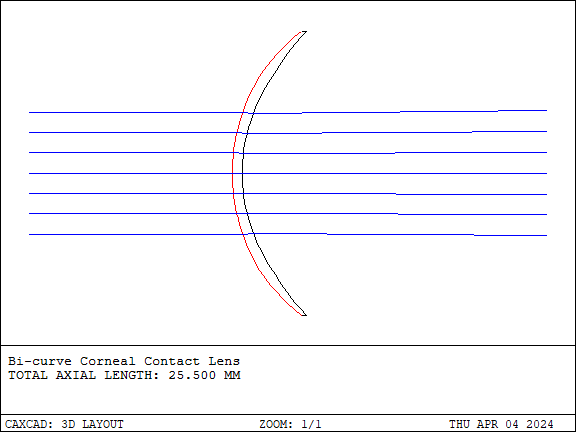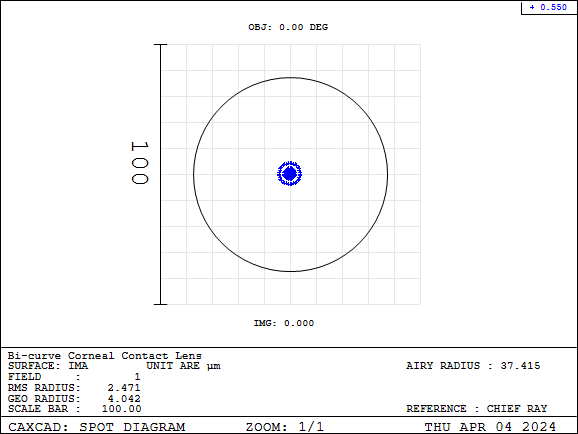Contact lenses are medical devices used to correct vision, placed directly on the surface of the eye or cornea unlike traditional eyeglasses. They are typically made of soft, breathable materials for comfort and adaptability. Contact lenses can correct vision problems such as nearsightedness, farsightedness, and astigmatism, providing a more natural appearance without obscuring facial features.
 |
 |
There are various types of contact lenses based on their usage, including daily disposables, bi-weekly disposables, and monthly disposables. Daily disposables are discarded after each day of use, while monthly disposables can be used continuously for about a month before disposal.

In addition to regular contact lenses, there are special types like orthokeratology lenses used to treat corneal refractive errors. Despite their advantages such as wide field of vision and stability during physical activities, contact lenses come with potential risks like corneal infections and dry eyes. Therefore, it's essential to strictly follow the doctor's advice and instructions, properly clean and maintain lenses, undergo regular eye check-ups, and replace lenses timely to ensure eye health.

Surface:
The surface of a contact lens facing the object is called the front surface, while the surface facing the eye is called the back surface. A spherical front or back surface is termed as a single-curved surface. If the front or back surface has two regions with different axial curvature radii, it's termed as a biconic surface. Multicurved surfaces have three or more axial curvature radii. A rotationally symmetric front or back surface with continuously changing curvature radii from the center to the periphery is termed as a rotationally symmetric non-spherical surface.
Regions:
The region of a contact lens that provides the required refractive correction power is called the optical zone. The peripheral region is the outer area of the front or back surface; it can be spherical, non-spherical, or conical. The non-spherical region is a curved surface area that is neither spherical nor conical; for example, it can be ellipsoidal, parabolic, or biconic. The transition zone is the area between two regions.
Stability:
Form stability distinguishes between rigid and soft contact lenses. It is primarily determined by the shape and material of the lens. Rigid contact lenses maintain their shape without support under normal conditions. Soft contact lenses change shape without support. Hydrogel contact lenses are soft lenses made from hydrophilic materials.
Identification:
It is necessary to specify the type and vertex refractive power of contact lenses for identification purposes. The best back surface contact lens must be selected for the eye requiring correction as it must directly contact the anterior segment of the eye. Therefore, other dimensions related to fitting need to be specified as well. These include the back central optical radius, the morphology of the peripheral area, and the total diameter of the contact lens.
Design Types:
Contact lenses with spherical power can be corneal, corneoscleral, or scleral lenses. They have an optical zone with spherical refractive power and a peripheral zone with one or more spherical, non-spherical, or conical regions. Contact lenses with spherical power may have different back surface profiles. The shape of the peripheral zone or the number of peripheral zones is used to identify contact lenses.
Corneal Lenses and Scleral Lenses:

Biconic corneal lenses and tricurve scleral lenses
 |
 |
Spherical optical central zone, non-spherical edge zone

Application of Non-spherical Surfaces in Contact Lenses:
Most contact lenses with non-spherical back surfaces have an elliptical contour with an eccentricity ranging from 0.4 to 0.6. The refractive power variation caused by the non-spherical back surface of contact lenses is practically meaningless within this range. Besides the conical back surface profile, other profiles that can only be represented by higher-order functions are also used.
Application of CAXCAD in Contact Lenses:
The MISC catalog also includes materials ACRYLIC, PMMA, and STYRENE, which are useful for contact lens and intraocular lens optics.
CAXCAD provides targeted design for contact lenses by providing the surface shape of contact lenses. Utilizing this surface shape, we can design contact lenses with biconic and tricurve surfaces.

After lens optimization, the optical zone produces negative focal length, which means a myopic power of -3D
 |
 |
If a spherical surface is used, significant spherical aberration occurs, resulting in larger blur circles.
 |
 |
If a non-spherical surface, especially higher-order non-spherical surfaces, is used, the blur circles can reach the diffraction limit.
 |
 |
Observations with Non-spherical Surfaces:

By utilizing second-order conic surfaces, we observe that the blur circles can reach the diffraction limit.
 |
 |
 At a 6mm pupil size, observing objects:
At a 6mm pupil size, observing objects:

The resolution corresponding to the object is a blur circle of 60um, meaning 8 line pairs per millimeter can be resolved, which is consistent with the maximum resolution visual acuity of standard naked eyes.


